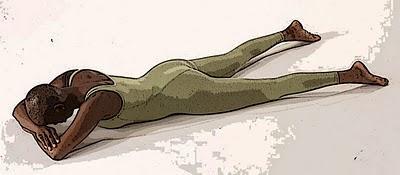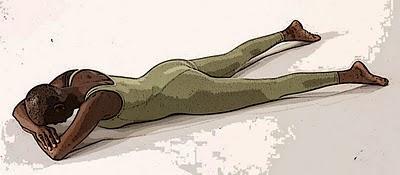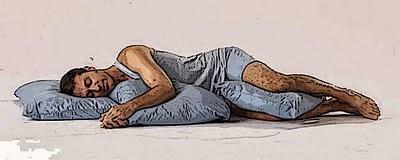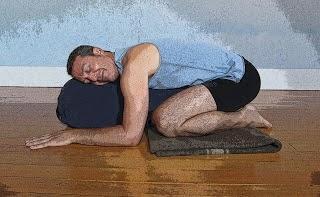
Crocodile Pose
On Friday, Baxter wrote about how meditation and other forms of conscious relaxation, such as yoga nidra, can be agitating for certain people (see Friday Q&A: Can Meditation Be Dangerous?). I wouldn’t be surprised if that were true for many of us at certain times. Sometimes when you’re feeling anxious or depressed having to sit quietly with your thoughts can be overwhelming. The same thing is true for lying down on your back in Savasana or restorative poses with your eyes closed. Even practicing supported forward bends, which many people find soothing, can cause you to brood rather than quiet down.A more active yoga practice will be easier for you when you’re depressed or anxious—the physical challenges and mindful movements will engage your mind—yet it’s still important for you to manage your stress (see One Thing: Yoga, Zen, Whatever). So here are some ideas for different things you can try when classic relaxation techniques just aren’t working for you.
Eyes Open: If closing your eyes in Savasana or any restorative pose causes agitation or brooding, try keeping your eyes open but with a soft focus.
Crocodile Pose: Sometimes lying on your back can make you feel exposed and vulnerable (see Anxiety, Yoga and the Front Body). So try lying on your belly in Crocodile pose (Makrasana) instead to see if that is more comforting. If your lower back curves too much in Crocodile pose, place a folded blanket (long rectangle) under your lower belly.



Supported Child’s Pose: Like Crocodile pose, Supported Child’s pose allows you to relax without feeling exposed or vulnerable. Many people actually find hugging their bolsters very comforting. You can turn your head to side and keep your eyes open if that helps; just be sure to turn your head to the other side for an equal amount of time.

Choose Appropriate Breath Practices: Never do a breath practice that makes you feel uncomfortable in any way. Practices that encourage you to take a longer and/or deeper inhalation can actually be agitating for people with anxiety. The safest thing to do is just to practice simple breath awareness. But if that isn’t enough to engage your mind and you keep being distracted by depressing or anxious thoughts, try a practice that’s recommended for your particular state (see Balancing Your Emotions with your Breath).
And please let me know if you have any further recommendations! I'd love to add more ideas to my list.
Finally, if you are a teacher who is teaching one or more students with mental disorders, it is always a good idea to let the class know that if anyone becomes seriously agitated, anxious or depressed during meditation or relaxation, they should stop and raise their hand so you can help them find an appropriate alternative.
Subscribe to YOGA FOR HEALTHY AGING by Email

